A land of immigrants can not only be a melting pot of cultures but also of food. But despite the eclectic mix, a region can still retain and showcase its uniqueness when it comes to wine and dine experiences, I found, on a week-long tour to Victoria, Australia in June this year.
Food influences
The Chinese, Vietnamese and Filipinos are present in big numbers in Australia, declared our able tour guide Maree Martin from Visit Victoria. What best way to experience the immigration influence than taste their food, we thought, and made our way to Tim Ho Won, renowned for their BBQ pork buns.
Having its origins in Hong Kong, Tim Ho Won is often called the most affordable Michelin-starred restaurant in the world and currently has its only Australian outlet on Bourke Street, Melbourne.
While my fellow travellers savoured the pork buns, I opted for their equally popular vermicelli rolls, topped with sesame, peanut & soy sauce. I wasn’t disappointed. However, the osmanthus flower jelly that followed put the silky-smooth vermicelli rolls to shame. Mildly sweet, it was a treat to the taste buds and the nostrils, too.
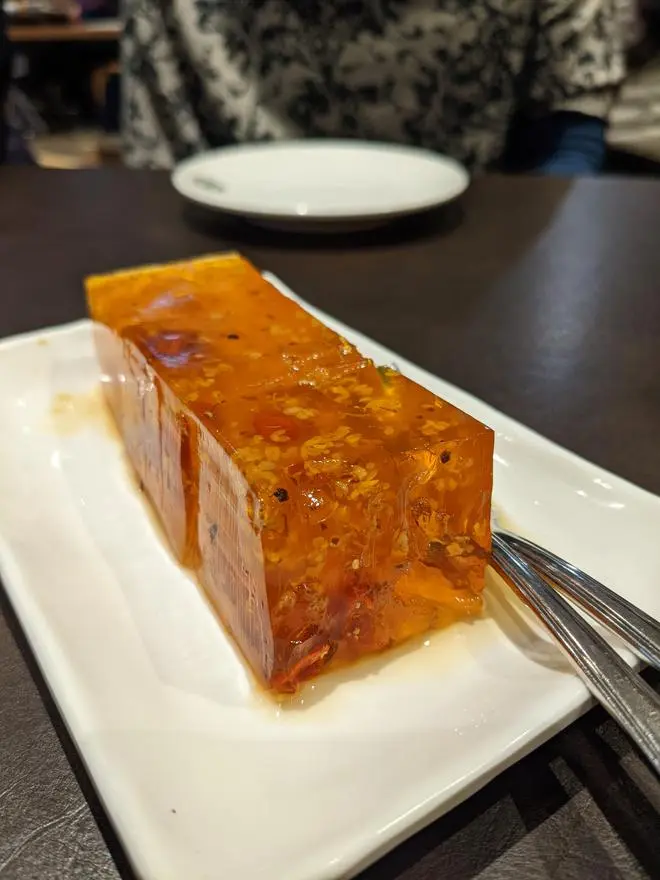
Osmanthus flower jelly at Tim Ho Won, Melbourne | Photo Credit: Parvatha Vardhini C
At Little Brother, a Vietnamese kitchen, rice paper rolls with colourful veggie and greens filling, was my choice.
If there is one dish in India I could bring its looks and texture close to, it would be the Pootharekulu from Andhra, except that the latter comes with a filling of jaggery and nuts. Vegetarian crystal dumplings I found in the classy SilverKris Lounge of Singapore Airlines at the Changi Airport comes a close second.
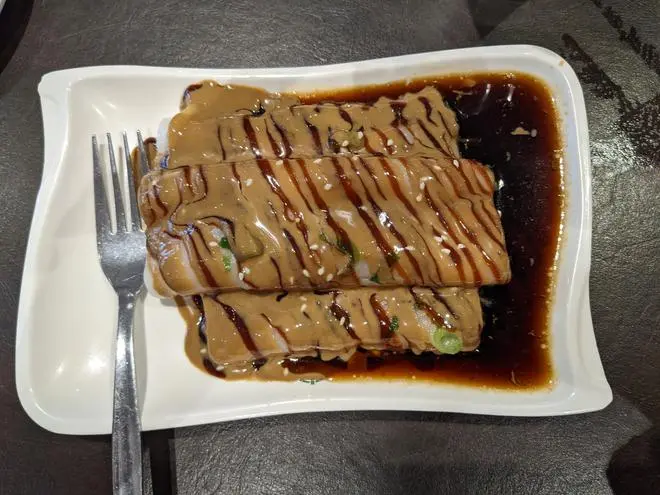
Vermicilli rolls at Tim Ho Won, Melbourne | Photo Credit: Parvatha Vardhini C
However, nothing is reflective of the medley of ethnicities in Australia than the offerings at Gewurzhaus Spice House in Melbourne’s buzzing Collins Street.

Spices at Gewurzhaus Spice House, The Block Arcade, Melbourne | Photo Credit: Parvatha Vardhini C
From the Saudhi baharat, Malay satay and Jamaican jerk spice to the Oishii instant ramen blend, Lousianian cajun and our very own tandoori masala, Gewurzhaus sells the secret sauce of every immigrant’s kitchen.
Holding its own
Tough competition, eh? Unfazed, Australia holds its own and stands out in the crowd.
Desi food experience for tourists is available right in the heart of Melbourne. A uniquely Australian restaurant, ‘Big Esso’, is right at Federation Square on the banks of the Yarra river, which was once a breeding and hunting ground for local food.
The food joint is a tribute to the cultural and culinary heritage of the Komet Tribe from the Torres Strait, with chef Nornie Bero hailing from this tribe, we learnt. Big Esso serves exotic native dishes such as the coconut cured king fish (called Namas), kangaroo tail & pepperberry bourguignon and saltbush & pepperberry fried crocodile.
Surprisingly, a whole variety of native yams from cassavas to the purple ones are served too. At The Lighthouse , a bistro set up as part of the ‘RISING’ festival in Melbourne which was on from June 1- 19, I enjoyed the mindfully grown dry Australian rice, with confit nori and mushrooms.
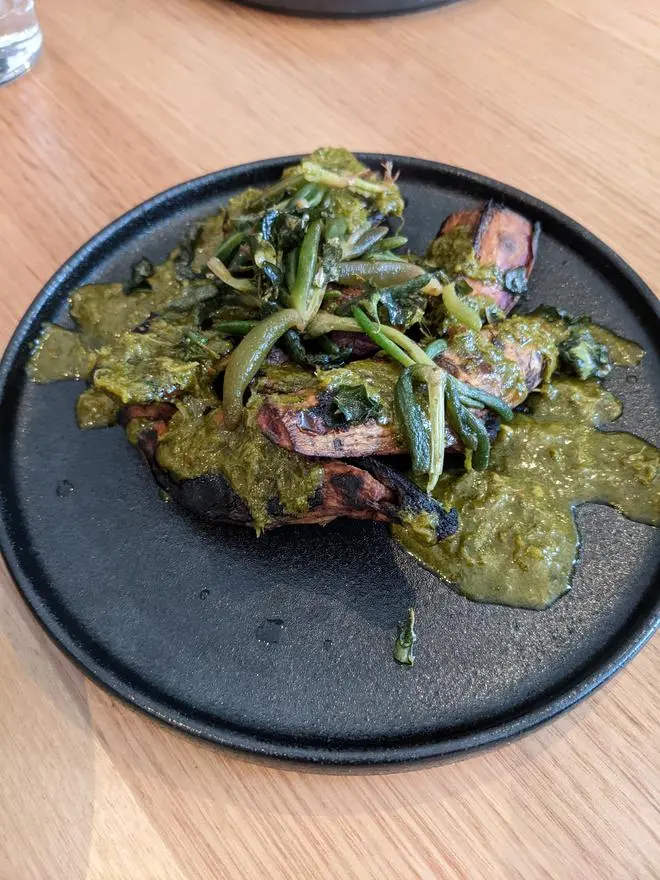
Rock baked yam, sea parsley, saltbush, Warrigal greens chimichurri and pickled karkalla at the Big Esso, Melbourne | Photo Credit: Parvatha Vardhini C
Hunting for native spices at Gewurzhaus, I found interesting options such as the Melbourne coffee & charcoal meat rub, Australian bush herbs and local bush pepper blend.
I finally settled for a native lemon pepper blend where Queensland- grown black pepper complements an intense lemon flavour from Austraila’s own lemon myrtle plants. Saltbush, aniseed and thyme add the necessary sweet and salt to perfect the taste. Back home, I discovered that mashed potatoes and freshly cut avocados with a dash of this blend taste out-of-the-world!

Dry grown Australian rice with confit nori and mushrooms at The Lighthouse | Photo Credit: Parvatha Vardhini C
Australia offers some distinctive indulgences too. The Pavlova deserves a mention. A crisp outer with the look and feel of a macaron but an inside as soft as marshmallow — that’s Pavlova for you. Whipped cream, castor sugar and egg whites are the key ingredients.
It is a popular Christmas dessert across the continent, I figured, and is served chill to beat the heat of the December summer in the southern hemisphere.

Pavlova at Coda Lorne, along the Great Ocean Road | Photo Credit: Parvatha Vardhini C
ANZAC cookies, made of oat and desiccated coconut cannot be missed. In that, the ones coated with chocolate? Never! Do you know that ANZAC is actually short form for Australia and New Zealand Army Corps? Legend goes that these biscuits kept the soldiers going during WWI, having been sent across the shores through the navy by their womenfolk.
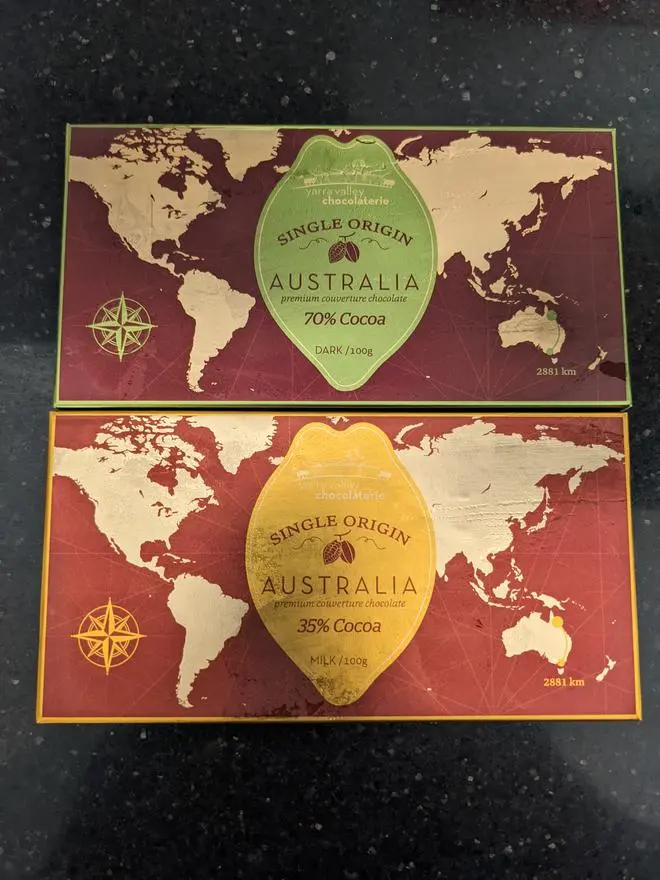
Chocolates made from Australian single origin cocoa beans at the Yarra Valley Chocolaterie | Photo Credit: Parvatha Vardhini C
The continent even grows its own cocoa beans, paving way for Australian single origin cocoa chocolates, I got to know, at the Yara Valley Chocolaterie. With the Victorian weather not conducive for growing cocoa, the beans come from as far as 2,881 kms away — the north-eastern tip of the country.
Not just wine

On offer at St Hubert’s | Photo Credit: Parvatha Vardhini C
Thankfully, the cool Victorian weather is just perfect for nurturing vineyards. We visited St Hubert’s, about an hour’s drive from Melbourne, which serves as the gateway to the Yarra Valley, the country’s premier wine producing region. The winery, known for its Cabernet Sauvignon, has a reputation for its portfolio of cool climate wines including Chardonnay, Pinot Noir and Roussanee.
St Hubert’s Cellar Door
At a tasting session at Montalto winery, the Chardonnay emerged the favourite, being light and easy.
While my companions further indulged in Victorian wines from South Gippsland, King Valley, Mornington Peninsula and Geelong at The Lighthouse, I was all for ‘Non’s, which are alcohol-free alternatives, paired by Blackhearts & Sparrows.
A four course tasting session later, I found Course two — made of roasted peppers, tomato, basil, celery seed and coriander seed 1 — the most inviting. This one was similar to a ‘skin contact white wine’ explained the host.
Course four, though pink in colour because of the beetroot, was the most fiery, thanks to Sansho pepper and the jalapeno. Course one with raspberries, chamomile and Murray River salt was the mildest, akin to a Rosé. Course three gravitated towards a sparkling wine, replete with flavours of coffee and garam masala!
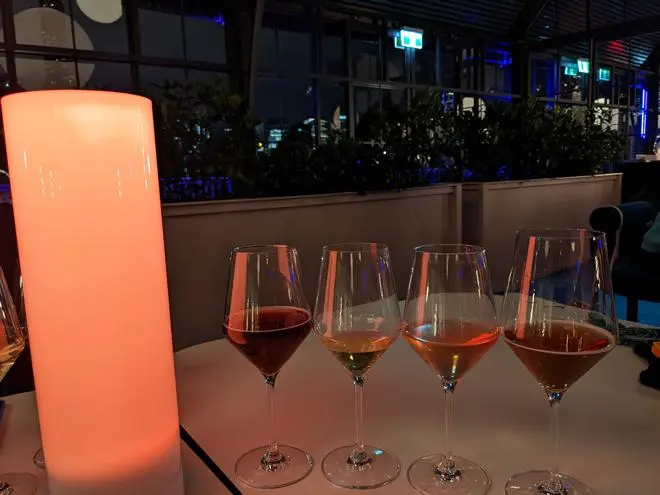
Non. The 4 course alcohol-free alternatives paired by Blackhearts & Sparrows at The Lighthouse, Melbourne | Photo Credit: Parvatha Vardhini C
“Nons are gaining popularity, as there is a whole new generation of drinkers who have wine to just experience the flavour. When they find that the flavour can be replicated without the alcohol, they don’t mind at all,” explained one of my travel companions, a certified sommelier and a wine columnist from India.
Courtesy Visit Victoria, I am now part of this elite club!
(This writer was in Australia recently at the invitation of Visit Victoria and Singapore Airlines)





Comments
Comments have to be in English, and in full sentences. They cannot be abusive or personal. Please abide by our community guidelines for posting your comments.
We have migrated to a new commenting platform. If you are already a registered user of TheHindu Businessline and logged in, you may continue to engage with our articles. If you do not have an account please register and login to post comments. Users can access their older comments by logging into their accounts on Vuukle.